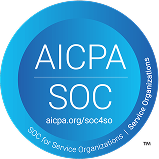Benchmarking
Benchmarking in the context of AI companies refers to the systematic process of evaluating the performance of an AI model, system, or technology by comparing it against standardized tasks, datasets, and metrics—usually those that are widely recognized in the industry or academic research. The goal is to measure how well the AI performs in areas like accuracy, speed, efficiency, fairness, robustness, or scalability relative to competing models or industry leaders.
Key Features of Benchmarking ( Done the Correct way)
- Clear Objectives
- Define why you're benchmarking (e.g., improve accuracy, reduce latency, enhance fairness).
- Align with business goals or product requirements.
- Define why you're benchmarking (e.g., improve accuracy, reduce latency, enhance fairness).
- Relevant Benchmarks
- Use industry-standard datasets (e.g., ImageNet, MMLU, GLUE, SuperGLUE, HumanEval).
- Ensure benchmarks reflect real-world tasks and your target use cases.
- Use industry-standard datasets (e.g., ImageNet, MMLU, GLUE, SuperGLUE, HumanEval).
- Consistent Testing Environment
- Run tests under controlled and reproducible conditions (same hardware, software version, batch size, etc.).
- Avoid comparing results from different testing setups.
- Run tests under controlled and reproducible conditions (same hardware, software version, batch size, etc.).
- Comparable Metrics
- Use standardized, meaningful metrics (e.g., F1 score, BLEU, accuracy, latency, energy consumption).
- Normalize metrics where needed to make fair comparisons.
- Use standardized, meaningful metrics (e.g., F1 score, BLEU, accuracy, latency, energy consumption).
- Transparent Methodology
- Document model versions, training data, fine-tuning methods, and inference parameters.
- Transparency builds credibility and trust.
- Document model versions, training data, fine-tuning methods, and inference parameters.
- Competitive and Peer Comparison
- Compare results against your own baselines and against top competitors or published models.
- Use public leaderboards when possible.
- Compare results against your own baselines and against top competitors or published models.
- Actionable Insights
- Use results to identify strengths and weaknesses.
- Let benchmarking guide model improvement and iteration.
- Use results to identify strengths and weaknesses.
- Ethical and Fair Use
- Avoid biased datasets and include diverse cases.
- Factor in bias, fairness, and inclusivity in evaluations
- Avoid biased datasets and include diverse cases.
Applications of Benchmarking
- Model Performance Evaluation
- Assess how well an AI model performs on standard tasks using objective metrics.
- Assess how well an AI model performs on standard tasks using objective metrics.
- Product Comparison
- Compare your AI solution to competitors to identify strengths, weaknesses, or market differentiators.
- Compare your AI solution to competitors to identify strengths, weaknesses, or market differentiators.
- Research Validation
- Validate new models or techniques against published baselines to show scientific progress.
- Validate new models or techniques against published baselines to show scientific progress.
- Model Optimization
- Identify performance bottlenecks or inefficiencies (e.g., speed, memory usage, accuracy) to guide tuning and optimization.
- Identify performance bottlenecks or inefficiencies (e.g., speed, memory usage, accuracy) to guide tuning and optimization.
- Customer Communication
- Share benchmark results to prove value and build trust with clients or stakeholders.
- Share benchmark results to prove value and build trust with clients or stakeholders.
- Marketing & Sales Enablement
- Use competitive benchmarking to support messaging like “faster,” “more accurate,” or “state-of-the-art.”
- Use competitive benchmarking to support messaging like “faster,” “more accurate,” or “state-of-the-art.”
- Compliance and Standardization
- Meet industry standards or regulatory requirements by proving that the AI system behaves reliably and fairly.
- Meet industry standards or regulatory requirements by proving that the AI system behaves reliably and fairly.
- Continuous Improvement
- Track progress over time and set benchmarks as internal goals for development teams.
- Track progress over time and set benchmarks as internal goals for development teams.
- Talent and Recruitment
- Attract top talent by showcasing cutting-edge benchmarks or leading positions on public leaderboards.
- Attract top talent by showcasing cutting-edge benchmarks or leading positions on public leaderboards.
- Investor Relations
- Present benchmarking data to demonstrate competitive advantage and technological maturity to investors.


즉각적인 GPU 클라우드 액세스를 통해 인류의 AI 야망을 강화합니다.
2860 잔커 로드스위트 100 캘리포니아 산호세 95134
GMI Cloud
278 Castro St, Mountain View, CA 94041
Taiwan Office
GMI Computing International Ltd., Taiwan Branch
6F, No. 618, Ruiguang Rd., Neihu District, Taipei City 114726, Taiwan
Singapore Office
GMI Computing International Pte. Ltd.
1 Raffles Place, #21-01, One Raffles Place, Singapore 048616
Sign up for our newsletter
Subscribe to our newsletter


© 2024 판권 소유.

